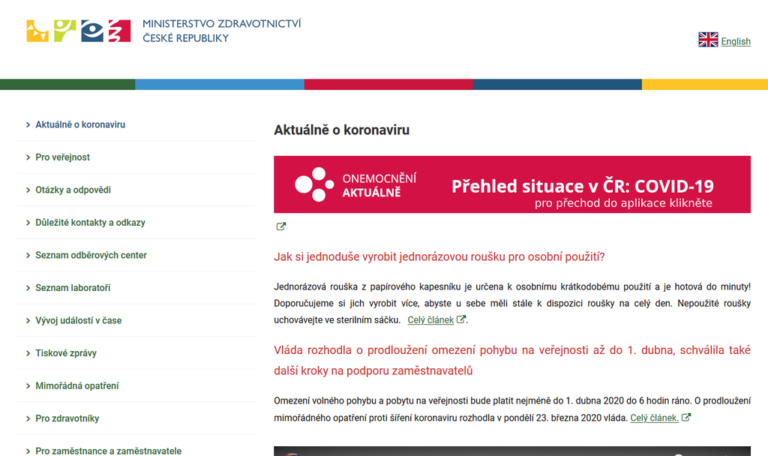Competitiveness / Health Care
This section feature research, opinion and progress reports on how the Czech Republic compares to other EU countries economically. It includes analysis of international rankings such as the WEF and World Bank.
Show subcategories ▾
Spotlight issue
COVID-19 Resource calculator for Hospitals
Rush Medical University in Chicago together with Microsoft team has developed an app COVID-19 Resource calculator to forecast the patient's admission, medical inventories, and beds, based on applicable growth models (the models differs from state to state). This app is running in Azure – you can see it here: http://covid19forecast.rush.edu/.
View more

Helping with crisis information website for Czech Ministry of Health
The voluntary group of IT experts (under Česko.Digital community) helped to create a crisis information website for Czech Ministry of Health about the coronavirus outbreak in the Czech Republic koronavirus.mzcr.cz in a very short time with a great ability to manage the huge turnout of visitors. Vaclav Jirovský, Cloud Solution Architect, MSD IT is the author and driver of the technical solution described in the article below.
View more

Coronavirus pandemic: When will it end? (United Kingdom)
Businesses around the world are reacting to a situation that's changing hourly. But they also need to look further ahead. We asked Emilia Skirmuntt, a virologist at the University of Oxford, to set out – with no hyperbole – the possible scenarios businesses must plan for. The views expressed in this article are those of the author and not of the University of Oxford.
View more
Respiratory Protection FAQ: General Public
During public health events – such as wildfires, times of high air pollution, airborne-transmissible disease outbreaks, etc. – members of the public may choose to wear a respirator to help reduce their exposure to airborne particulate hazards. When respiratory protection is recommended for workers and the public, the recommendations often focus on government approved respirators such as "N95, FFP2 or equivalent.” When used correctly, respirators can help reduce wearers’ exposures to airborne particulate hazards such as dusts, pollen, PM2.5, mists and fumes – including particles so small that they can’t be seen. Respirators contain filter material and are designed to form a seal with the wearer’s face, so that air passes through the filter (instead of around the edges) before it is inhaled. A common choice is a disposable filtering facepiece respirator (FFR), sometimes referred to as a particulate respirator, such as those shown below.
View more

3E – EMA and EU and eHealth
On its 25th anniversary, EMA - as a kind of a birthday present – published, in collaboration with Heads of Medicines Agencies, Big Data Taskforce Phase II report and 10 recommendations, which should unlock the potential of Big data in the healthcare segment.
View more

 Twitter
Twitter Linkedin
Linkedin Facebook
Facebook Google+
Google+




